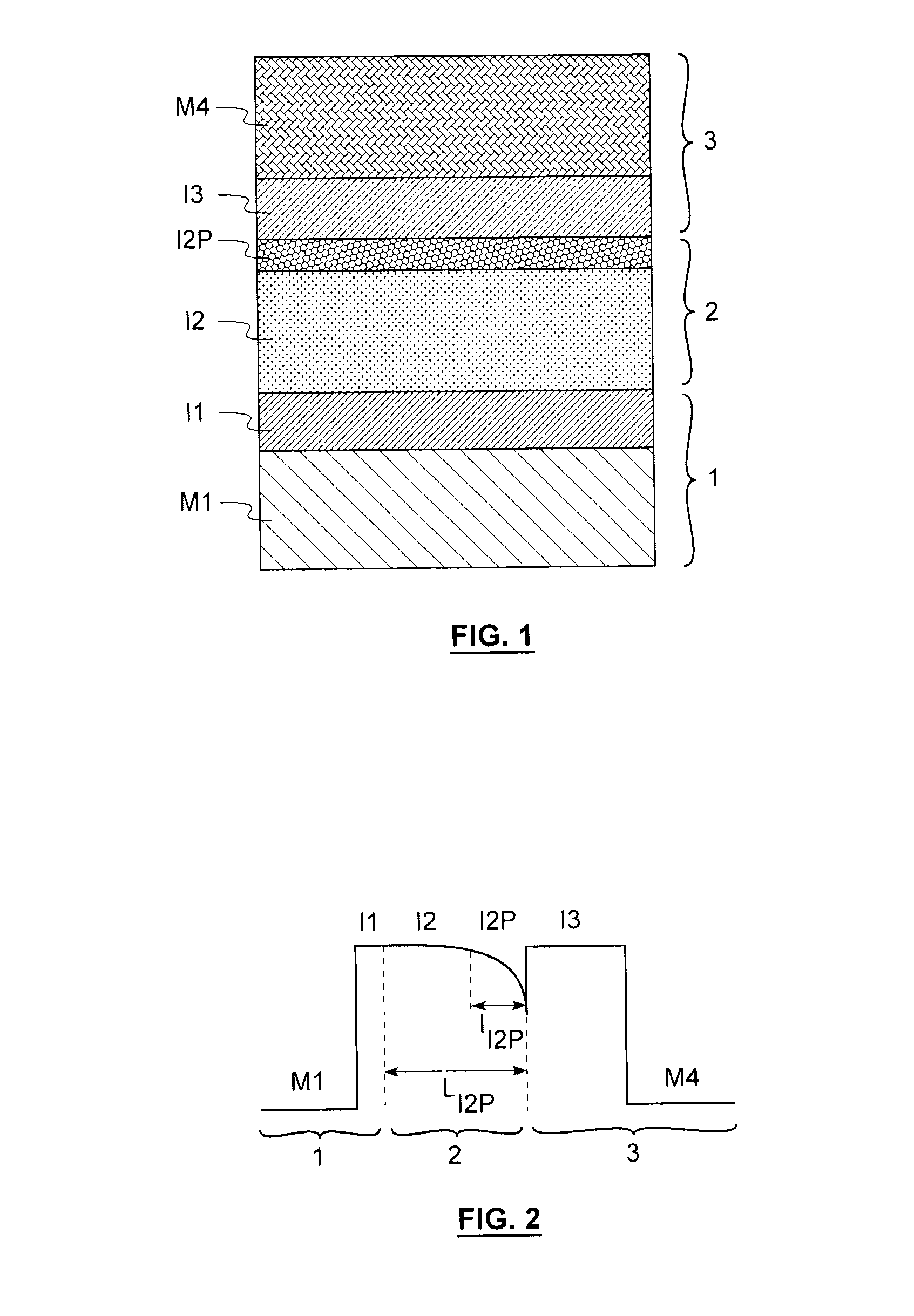Non volatile resistive memory cell and its method of making
- Summary
- Abstract
- Description
- Claims
- Application Information
AI Technical Summary
Benefits of technology
Problems solved by technology
Method used
Image
Examples
first embodiment
[0125] shown in FIGS. 3 to 7, the stack of the memory cell is partially arranged in the cavity 6. The connection line 7 of the lower level Mi−1 forms the metal layer M1 and possibly its layer of stoichiometric metal oxide I1. This is possible when the connection line 7 is made of Al, Ta, TaN or TiN. The layer of stoichiometric metal oxide I1 is then made of Al2O3, TiO2, TiON, Ta2O5, TaON. The metal layer M1 of the bottom electrode 1 and possibly the layer of stoichiometric metal oxide I1 are arranged outside of and under the cavity. The term under means that the metal layer M1 is present before the formation of the cavity, and the term outside of means that the metal layer M1 is of a length greater than the width of the cavity 6. The cavity 6 comprises from bottom to top, the insulation 2 comprising the layer of stoichiometric metal oxide I2 and the layer of substoichiometric metal oxide I2p forming said oxygen vacancy reservoir layer then the layer of stoichiometric metal oxide I3 ...
second embodiment
[0127] shown in FIGS. 8 and 9, the stack of the memory cell is entirely arranged in the cavity 6. The connection line 7 of the lower level Mi−1 does not form the metal layer M1. This is the case in particular when the connection line 7 is made of a material not adapted to the properties required in order to form a bottom electrode 1. The metal layer M1 of the bottom electrode 1 and possibly the layer of stoichiometric metal oxide I1 are arranged in the cavity 6. In this embodiment, note that the insulation 2 formed at least by the compliant layer of stoichiometric metal oxide I2 guarantees the electrical insulation between the metal layers M1 and M4. The metal layer M1 then plays the role of a barrier intended to limit the diffusion of the material of the connection line 7 in the memory cell.
[0128]The method of manufacturing a memory cell comprises the steps described hereinafter. The formation of a cavity 6 opening onto a connection line 7 of lower level Mi−1. Possibly, the complia...
PUM
 Login to View More
Login to View More Abstract
Description
Claims
Application Information
 Login to View More
Login to View More - R&D
- Intellectual Property
- Life Sciences
- Materials
- Tech Scout
- Unparalleled Data Quality
- Higher Quality Content
- 60% Fewer Hallucinations
Browse by: Latest US Patents, China's latest patents, Technical Efficacy Thesaurus, Application Domain, Technology Topic, Popular Technical Reports.
© 2025 PatSnap. All rights reserved.Legal|Privacy policy|Modern Slavery Act Transparency Statement|Sitemap|About US| Contact US: help@patsnap.com



